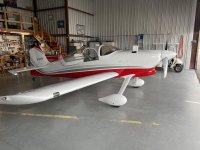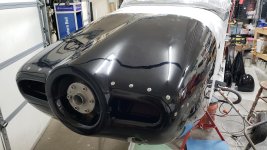wirejock
Well Known Member
Final numbers
Three coats of Kirker Ultra Glo single stage urethane
Total came in at 3.53 grams per ft².
Cut and buff removed a little less than a gram per ft². Not worth measuring.
If I sprayed the airplane, I would add a fouth layer. It was very thin. Cut&buff blew through the paint in a couple places
Add your own numbers for clear if using two stage paint.
Bottom line, figure a minimum of 10 grams per ft² for primer and paint for a minimum total of 10lbs. Clear would add at least 4 lbs.
Three coats of Kirker Ultra Glo single stage urethane
Total came in at 3.53 grams per ft².
Cut and buff removed a little less than a gram per ft². Not worth measuring.
If I sprayed the airplane, I would add a fouth layer. It was very thin. Cut&buff blew through the paint in a couple places
Add your own numbers for clear if using two stage paint.
Bottom line, figure a minimum of 10 grams per ft² for primer and paint for a minimum total of 10lbs. Clear would add at least 4 lbs.






